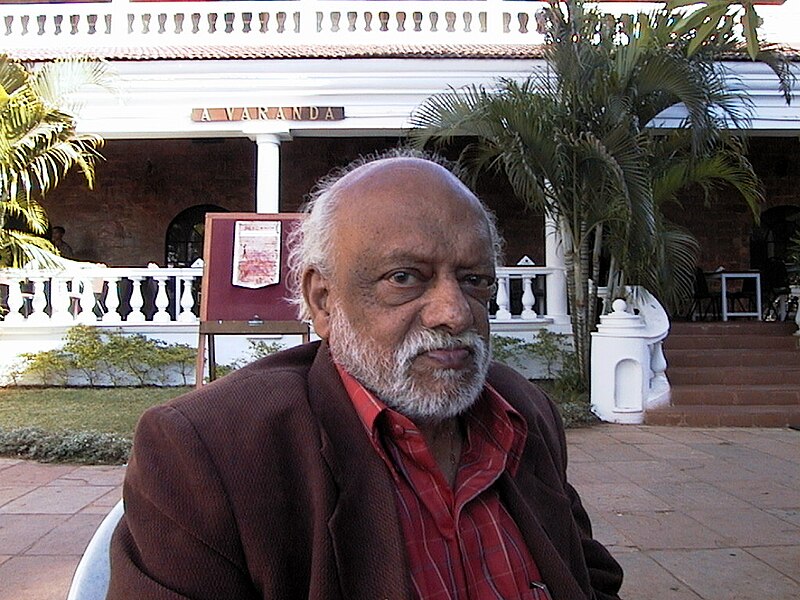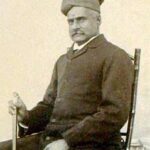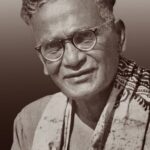Francis Newton Souza: 6 Incredible Facts About the Iconic Indian Artist
Francis Newton Souza, born in 1924 in Saligao, Goa, was a trailblazing figure in the Indian modern art movement. A prominent artist known for his bold expression and distinctive style, Souza’s work transcended national borders and garnered international acclaim. His works, infused with strong emotions and complex themes, reflect his deep exploration of the human condition, societal issues, and the intricacies of religious and cultural identities.
Souza’s journey was not just about his creativity but also about challenging the norms of both art and society. His unique art, defined by its strong, expressive lines and rich colors, continues to influence artists worldwide. Below, we explore Souza’s life, impact, and his enduring significance in the world of art.
Francis Newton Souza Early Life and Education
Francis Newton Souza was born into a devout Catholic family in Goa. He was drawn to art from an early age, and his early training at the Goa Art College gave him a foundational understanding of traditional techniques. Souza later moved to Mumbai (then Bombay), where he studied at the Sir J.J. School of Art. During his time in Mumbai, Souza’s artistic abilities began to flourish, influenced by the city’s vibrant art scene.
However, his artistic journey was not without challenges. Souza struggled with the limitations placed on him by colonial influences and conservative institutions, which led him to develop his own unique artistic voice. He faced frequent opposition for his unconventional approach, particularly his intense, raw, and sometimes controversial subject matter.
Francis Newton Souza Major Artistic Contributions
- Founder of the Progressive Artists’ Group: In 1947, Souza, along with other leading Indian artists such as S.H. Raza, M.F. Husain, and K.H. Ara, co-founded the Progressive Artists’ Group in Bombay. This collective aimed to break away from the traditional academic art practices and foster a new wave of modern, experimental art in India. The group played a pivotal role in the development of modern Indian art and in challenging the constraints of academic realism.
- Distinctive Style and Technique: Souza’s work is known for its expressive power and intensity. His use of distorted forms, bold lines, and vivid colors reflected his desire to portray emotional depth and psychological complexity. His figures often appeared contorted, as he sought to depict the rawness of human emotions. Souza’s paintings often dealt with themes of existential struggle, identity, and the tensions between religious and secular life.
- Religious and Cultural Themes: Many of Souza’s works reflect his complex relationship with religion and spirituality. Raised in a Catholic family, Souza’s paintings often explored themes of faith, sin, and redemption, depicting religious figures and iconography in unconventional ways. His works are known for their bold critique of religious dogma and his willingness to push boundaries, questioning societal norms and offering a more raw and honest exploration of spirituality.
- Social Commentary and Political Themes: Souza’s work often carried a deep critique of the social and political issues of his time. His paintings depicted the struggles of the working class, the marginalized, and the oppressed, as well as commentary on colonialism and post-independence India. He often used his art as a tool for social change, pushing viewers to confront the uncomfortable truths of society.
- International Recognition: Souza’s art gained significant international recognition, particularly in Europe and the United States. His works were showcased in various prestigious galleries, including those in London, Paris, and New York. Souza’s ability to fuse Western modernism with Indian themes and his distinctive, bold style made him a standout figure in the global art scene. His paintings remain highly regarded in the international art market and continue to fetch record-breaking prices at auctions.
- Legacy and Influence: As a pioneering figure in Indian modern art, Souza’s influence can still be seen in contemporary Indian artists and global art practices. His work challenged the conventions of both Indian and Western art, bridging cultural gaps and inspiring future generations of artists. Souza’s legacy is not just in his paintings but also in the progressive ideals he championed, which continue to shape the evolution of Indian modern art.
Francis Newton Souza Daily Life and Impact
Despite his fame, Souza led a turbulent life. His rebellious nature often clashed with the established norms of society and the art world. His personal life was marked by a series of struggles, including issues with his religious background, alienation from his family, and difficulty in finding acceptance in both Indian and Western art circles. His art, however, was deeply connected to his emotional state, and many of his most intense and poignant works came from times of personal hardship.
Souza’s work reflects his personal experiences, from the cultural conflict he felt growing up in Goa to his struggles with identity and religion. His deep exploration of the human psyche, particularly in relation to faith, sexuality, and societal expectations, made his art resonate with many who identified with his themes of alienation and personal conflict.
Important Facts About Francis Newton Souza
- Challenged Social Norms: Souza was known for his defiance of conventional artistic standards and societal norms. His raw and often provocative imagery challenged the status quo, making him both an admired and controversial figure.
- Political Involvement: Souza’s paintings were often politically charged, reflecting his disdain for the social and political issues of his time. His works questioned the hypocrisy of organized religion and the injustices of colonialism.
- Famous Works: Some of his most iconic works include “Christ on the Cross,” “The Last Supper,” and “The Birth of Christ.” These works exemplify his bold use of color, distorted figures, and powerful lines, making them stand out in the history of modern Indian art.
- Expatriate Life: Souza lived much of his life outside of India, spending time in London, New York, and Paris. His time abroad allowed him to interact with the international art scene and expand his creative horizons.
- Enduring Popularity: Despite his controversial nature and the challenges he faced in his lifetime, Souza’s work continues to be highly regarded and is celebrated as a critical part of Indian modern art history.
FAQs Francis Newton Souza
Q: What were the main themes in Souza’s paintings?
A: Souza’s paintings focused on themes of existential struggle, human suffering, sexuality, religious iconography, and social and political issues. His work often critiqued societal norms, religious dogma, and the inequities of colonialism.
Q: How did Souza’s personal life influence his art?
A: Souza’s personal struggles, including conflicts with religion, family, and identity, were often reflected in his art. His paintings depicted intense emotions and psychological conflict, drawing from his own life experiences.
Q: What makes Souza’s art unique?
A: Souza’s art is unique for its bold, expressive lines, distorted forms, and rich, vivid colors. He was one of the first Indian artists to fuse Western techniques of modernism with traditional Indian subjects, creating a distinct and recognizable style.
Q: How did Souza contribute to the Indian modern art movement?
A: As a founding member of the Progressive Artists’ Group, Souza played a key role in shaping the Indian modern art movement. His works challenged traditional Indian art forms and helped push Indian art into a more modern, experimental direction.
Conclusion: Francis Newton Souza’s Enduring Influence
Francis Newton Souza was a revolutionary artist who transcended the boundaries of both Indian and Western art traditions. His bold, expressive style and fearless approach to tackling social, political, and religious themes set him apart from his contemporaries. Souza’s contributions to Indian modern art continue to inspire and influence artists worldwide, and his works remain an important part of India’s cultural and artistic heritage. His legacy is a testament to the power of art as a tool for social change and personal expression.










